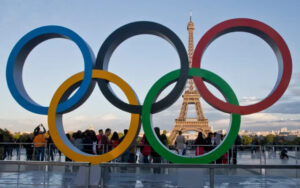
On Olympic day it is pertinent to ask as to when did India’s engagement with the Olympic movement actually start? While established histories have traced India’s participation to the Antwerp Games in 1920, there are documents that show that the engagement actually goes back to 1911-12 and there was much talk about India’s possible participation in Stockholm.
This was almost a decade before India sent its first set of athletes to Antwerp. These documents, a couple of which are being reprinted for our readers, demonstrate that a series of letters were exchanged between the British Olympic Association, the International Olympic Committee and the India Office, discussing the prospects of Indian participation at the 1912 Stockholm Olympics.
Had such participation taken place, India would have become the first Asian country to embrace the Olympic movement, alongside Japan, which established a national Olympic Committee in 1911 before participating in the 1912 competition – the first Asian country to do so.
Furthermore, the exchange of letters did not abate after the 1912 Games. Rather, the frequency of the letters only increased, as all sides focused on the prospects of India’s participation at the 1916 Olympic Games, which were meant to be held in Berlin. It is a different matter that these Games eventually did not take place because of the outbreak of the First World War.
Eventually India participated in the 1920 Antwerp games and under the patronage of Sir Dorab Tata sent a handful of athletes to the 1924 Games in Paris. While these athletes did reasonably well, the truth is none of them were in contention for a medal.
The first medal, and a gold at that, happened in the 1928 Games in Amsterdam. It was on this tour that Dhyan Chand established himself as the premier star of Indian hockey. For him, an enlisted sepoy in the Army and a man not born into privilege, the opportunity to represent India was an unexpected windfall.
Men’s hockey first appeared at the 1908 Olympic Games in London. It reappeared in Antwerp in 1920, returning to stay from the 1928 Amsterdam Games onwards. Contemporary reports and subsequent writings of A S De Mello indicate that India did not approach the Games with any fantastic hopes.
Jaipal Singh, who had a first class degree from his native Ranchi and was then a student at Balliol College, Oxford, was appointed captain of the team. Thirteen players sailed from Bombay to lead India’s challenge at the 1928 Olympics. However, before sailing for London, there was a last-minute alarm when it was revealed that because of insufficient funds only 11 of the 13 selected players could undertake the tour. Eventually all 13 made the tour largely owing to the munificence of the sports-loving public of Bengal, who organised public collections to make up the funding.
India played its first match against Austria winning 6–0, an encounter reported in detail at home. Already, Dhyan Chand was being described as the ‘world’s greatest centre forward’ and ended up scoring 14 of the 29 goals scored by India. When the Indians trounced Holland 3–0 in the final, the press back home went wild. It was in Amsterdam that the legend of Indian hockey was created. Even the Dutch papers praised the team with generosity; ‘So agile are the Indians that they could run the full length of the hockey field, juggling a wooden ball on the flat end of the hockey stick’.
India thereafter went on to win six consecutive gold medals, a streak that finally snapped in Rome in 1960 when the team had to settle for silver. They won the gold back in Tokyo in 1964 when the team led by Charanjit Singh defeated Pakistan 1-0 in the final. While India won another gold in Moscow in 1980, the wait thereafter was long and finally ended in Tokyo when the Indians made the podium after a gap of 41 years. With a team that was physically right up there with the world’s best and led by the world’s best drag flicker in Harmanpreet Singh, India repeated the success in Paris in 2024.
While hockey was India’s shining light, other medals that made a difference to India’s Olympic story came from KD Jadhav in 1952, Leander Paes in 1996, Karnam Malleswari in 2000 and Rajyavardhan Rathore in 2004.
Things took a dramatic turn in 2008 when Abhinav Bindra won India’s first individual gold medal and two others in Vijender Singh and Sushil Kumar added to the tally with bronze medals. The 3 medals won in 2008 doubled in 2012 with India winning 6 medals in London.
While Rio was a blip with Sindhu and Sakshi Malik saving the day, things again turned for the better in Tokyo in 2021 with Neeraj Chopra leading the way with a historic gold in athletics, the first ever Indian medal in track and field. While Neeraj starred in Tokyo, others like Ravi Dahiya, Lovlina Borgohain, Mirabai Chanu, Sindhu, Bajrang Punia and the men’s hockey team made India proud and the total tally of 7 medals was the highest ever for India in an Olympic games.
Paris was a dampener somewhat with 6 medals. With Neeraj looking strong to defend his title and others like Satwik-Chirag, Nikhat, Sift Samra winning regularly at the world stage, chances for India to touch the coveted double digit medal count in Paris was strong. It did not happen. But failure is as much part of the story and we celebrate the effort on Olympic day. The truth also is the Olympics no longer comes every four years in India. Now, it comes every day and that’s the transformation we are celebrating on this special day as we get ready to mount a bid for the 2036 Games.
For More Sports Related News: Follow RevSportz